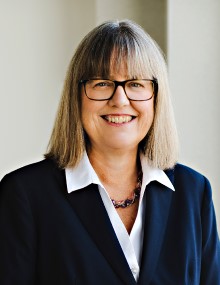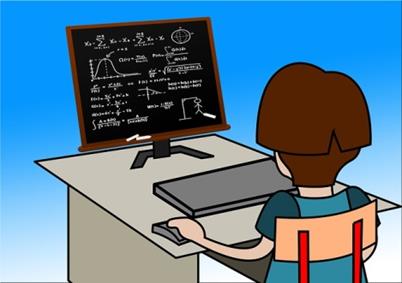Why Most Kenyan Girls Do Not Take Physics as a Subject
The number of girls taking physics in secondary schools is very low – but it doesn’t have to be that way This article looks at the measures we can take to correct things.
In a class of 120 students, 22 were taking physics of which only 4 were girls. This is New Kisumu high school’s class of 2006, of which I was part of.
Look at the figures! Only 4 girls out of a total of 120 boys and girls!
Currently, I am a Kenyan high school teacher of Physics and Chemistry. What I see in my class is no different from the statistics above. Girls are poorly represented as far as physics subject is concerned.
Globally, data from England shows that in 2016 no single girl studied A level physics in almost half of the schools in England that admit girls. Furthermore, just one-third of schools had at least two girls taking the subject.
The picture is the same across the world, despite the many initiatives to attract more girls into physics.
In Geneva Switzerland, a theoretical physicist named Alessandro claimed that women were less capable than men at physics. His claims cost him a suspension from CERN a European Organization for Nuclear Research where he was working.
But look at this, in 2018, Donna Strickland was awarded the Nobel Prize in Physics. She is the third woman in history to receive the Nobel Prize in physics in its 117 years of existence. Donna is a Canadian optical physicist and pioneer in the field of pulsed lasers.
Why is it that women can’t Do Physics?
To begin, let’s get one thing straight. The claim that girls are less capable than boys at physics is completely wrong. Girls are just as capable as boys.
To confirm this let’s take a look at the 2018 K.C.S.E results. The best student was Juliet Otieno of Pangani Girls in Nairobi.
The data shows that girls outshone boys in six subjects, one of which is metal work. So, it’s correct to say that Girls perform at least as well, if not better.
Sexism and stereotypes within physics teaching.
Sexism and stereotypes are engrained in our culture and it discourages girls from venturing into sciences at an early age.
It is of a kind of unconscious bias that our society replicates. Think of the many adverts shown on media, how many female engineers or architects or pilots are shown? Our girls decode this message to ‘science isn’t theirs.’
The categorization that there are “girls’ disciplines” and “boys’ disciplines” is another form of sexism and stereotyping that discourages girls from doing physics.
Gender Biased School Culture and Environment.
Most Kenyan schools have certain school traditions set by previous students. Whereas girls’ schools tend to encourage more girls to pursue physics, mixed schools tend to have the ‘unseen’ tradition of a few girls venturing into physics.
We teachers and students usually bring to school the subconscious beliefs about others and ourselves as well. Due to the many biological differences, like multiple minority identities, we end up treating, judging and evaluating people differently.
Furthermore, through our attitudes and education, we convey the message that physics is not for girls. When a girl makes a mistake, she’s made to feel it’s because girls can’t do physics.
Advertising Physics as the place for lone Geniuses.
How many times have you heard ‘Physics ni ya machopi’- translated as ‘ Physics is for Geeks’. This discourages many girls who believe that geek-ism is a boy thing.
It’s no doubt that most discoveries in physics were developed by the mental ‘cream de la cream’ of society. Take for instance Albert Einstein, whose I.Q measurement can’t be matched.
Poor Female Role Models.
Our closed relatives who act as our role models mislead the girls at a young age. Our Aunts and Cousins, Mothers and Grandmothers keep telling the girls at an early age that science is too hard as they were also told. And that it’s unmeant for them. Being their most important role models, the girls take in and sub-consciously believe the fallacy.
What can we do to encourage more girls to do physics?
With the above challenges, is it necessary for a girl to do physics and venture into physics careers? Yes, because the returns are worth it.

First, let’s discredit and steer away from the Sexism and stereotypes existing in our society.
Use of female images in media to depict engineers and other physics related professionals will go a long way in raising the confidence of girls.
The Decategorisation of disciplines based on gender is also a form of breaking the stereotypes.
We need to see to it that both girls and boys are raised in a gender-neutral way throughout their lives, Let the girls also be given toys that to enable them to develop their thinking about shape and geometry. It will also enhance their use of imagination.
Let the teachers integrate more of ICT materials in the teaching of physics. At the same time come up with creative ways of demystifying the fallacy that ‘physics is for genius.’ Rather tell them the truth: that we need hard work and effort to go through physics, and that we can accomplish many things by working constantly and progressively.
We can come up with subject mottos or catchphrases, for example, one like ‘physics is fun.’
Let’s also encourage the girls to do physics by letting them know they can be good at it.
We can talk science with young parents like those with baby or toddler groups. We can enlighten them that science and maths really aren’t any harder than other subjects. Science is fun, awesome and absolutely for everyone, not just for boys.
The parents and guardians can then become the role models and champions at encouraging, not discouraging their own children from fulfilling careers in science.
Our schools should invite positive female mentors to talk to the girls from an early age as possible. Enlightening them of the wider and numerous career opportunities that exist in physics.
With the above actions, we can be like Iran, whose 60 percent of physics undergraduates are women.



Comments are closed.